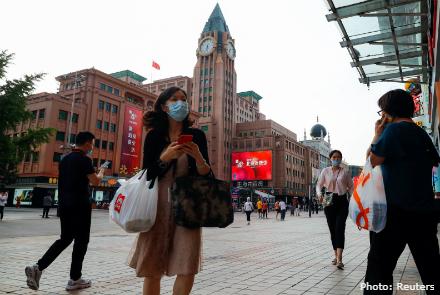Beijing officials reported several new COVID-19 cases for the sixth consecutive day on Wednesday, extending an outbreak that has forced the Chinese capital’s authorities to reinstate strict defences against the coronavirus.
Health officials recorded 31 new confirmed infections for June 16, bringing the cumulative infections since Thursday to 137 cases, the worst resurgence of the disease in the city since early February.
Authorities on Tuesday raised Beijing to a level two alert, the second-highest level in a four-tier COVID-19 emergency response level system. That reversed a one step downgrade from level two to level three a mere 10 days earlier.
Some 27 neighbourhoods were designated as medium-risk areas, subjecting people entering to temperature checks and registration. One neighbourhood, near the massive wholesale food centre detected as the source of the latest outbreak, was marked high-risk.
Under the level two restrictions, the city’s roads and highways were still open, companies and factories were not ordered to stop work, and there was no blanket curb on residential compounds.
However, movement of people in and out of the city was strictly controlled and subject to COVID-19 tests, while residents in high-risk areas were quarantined in their neighbourhoods and also required to undergo tests. Kindergartens, primary schools and high schools were all shut.
The outbreak has been traced to the sprawling Xinfadi wholesale food centre in the southwest of Beijing where thousands of tonnes of vegetables, fruit and meat change hands each day.
The new coronavirus was first identified in December at a seafood market in Wuhan, capital of the central Chinese province of Hubei, and has since spread around the world, infecting more than 8 million people.
State media has cited experts as saying the latest outbreak in Beijing was different from Wuhan because the cases were localised and the source of the infection was clear, allowing authorities to more easily get the situation under control.

